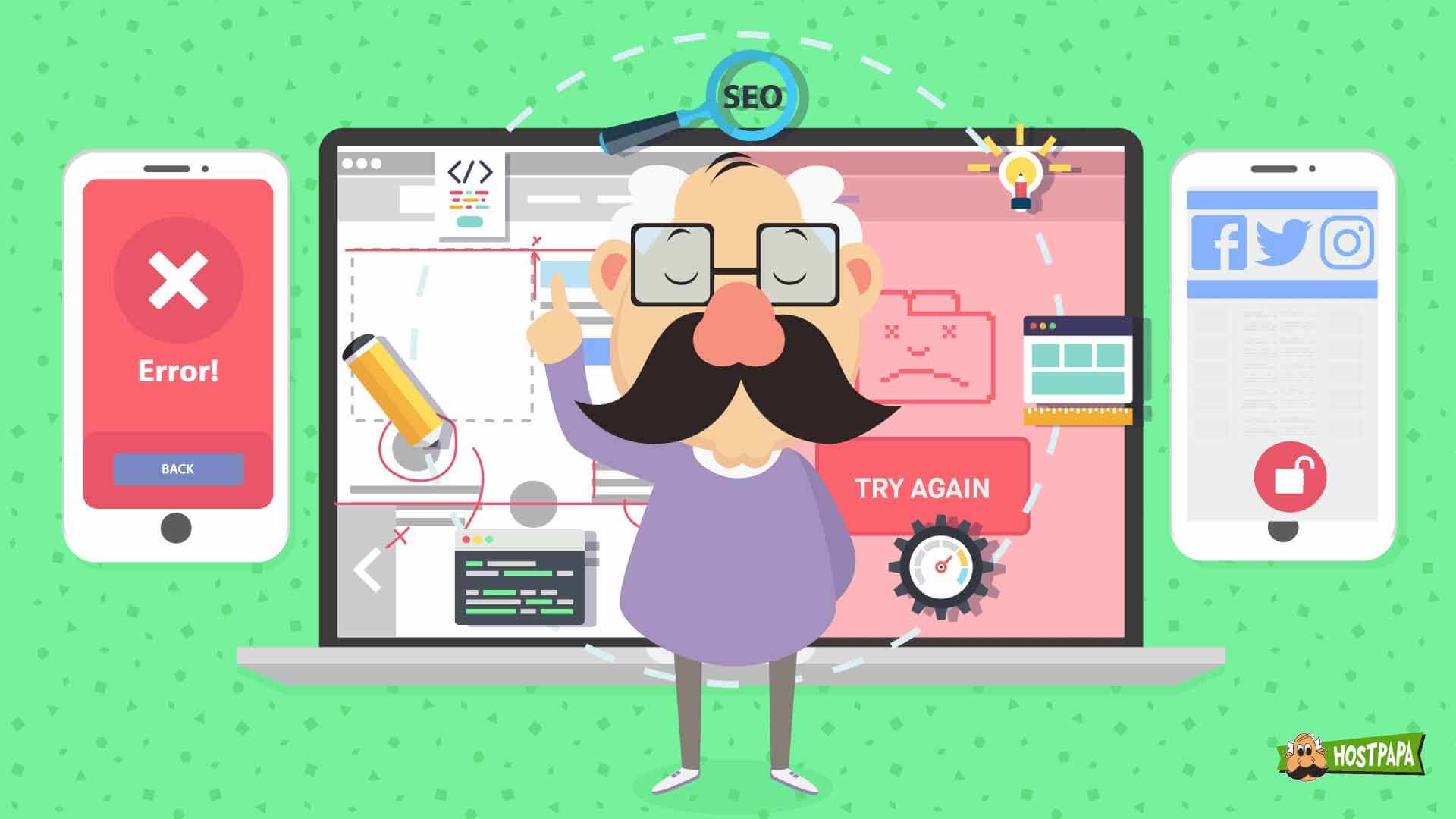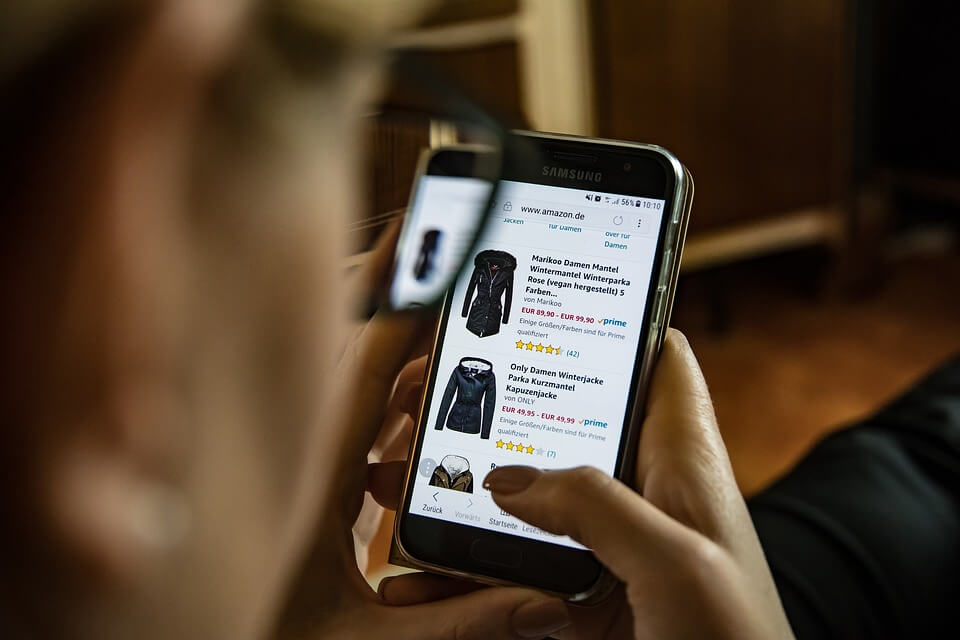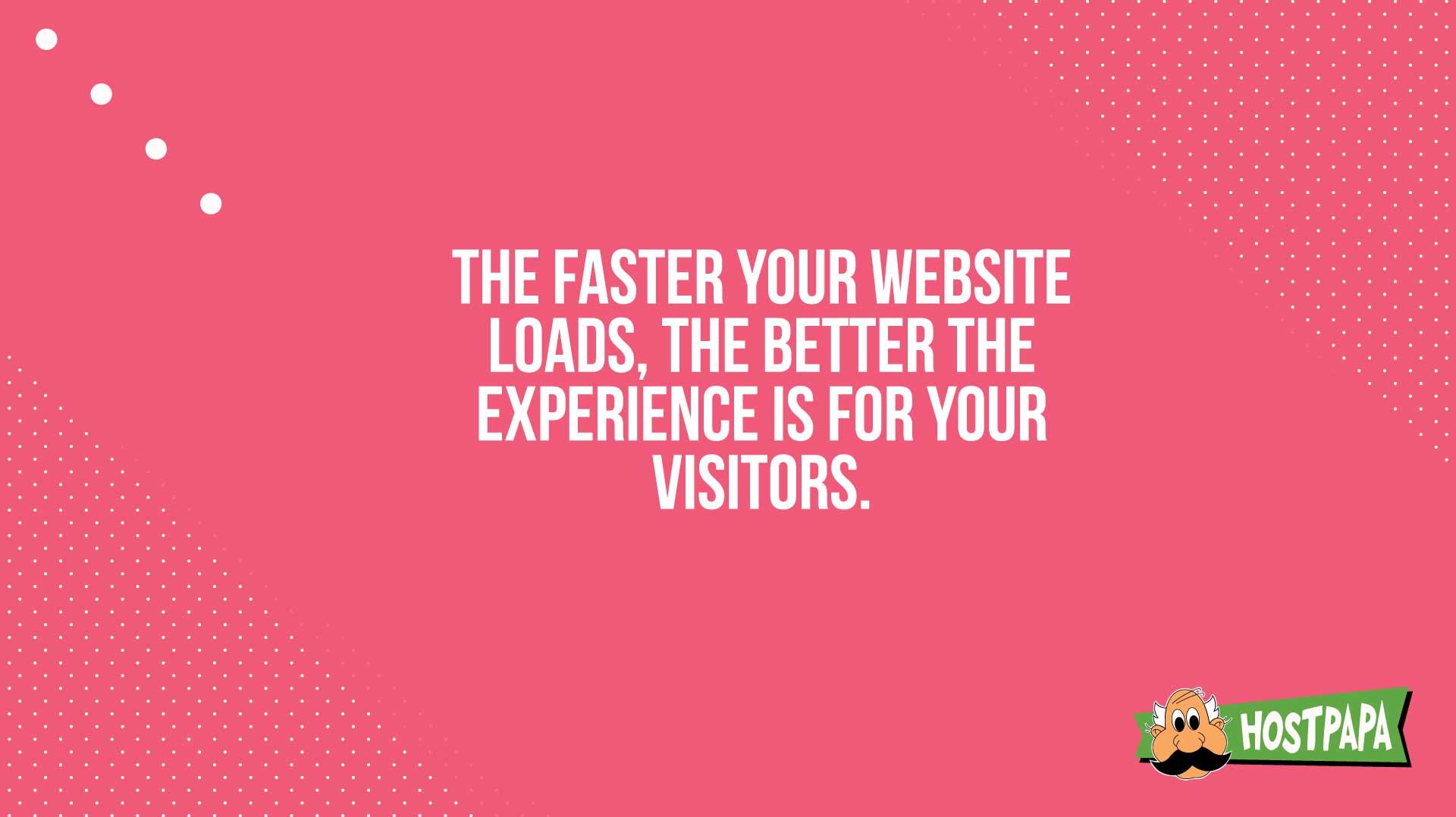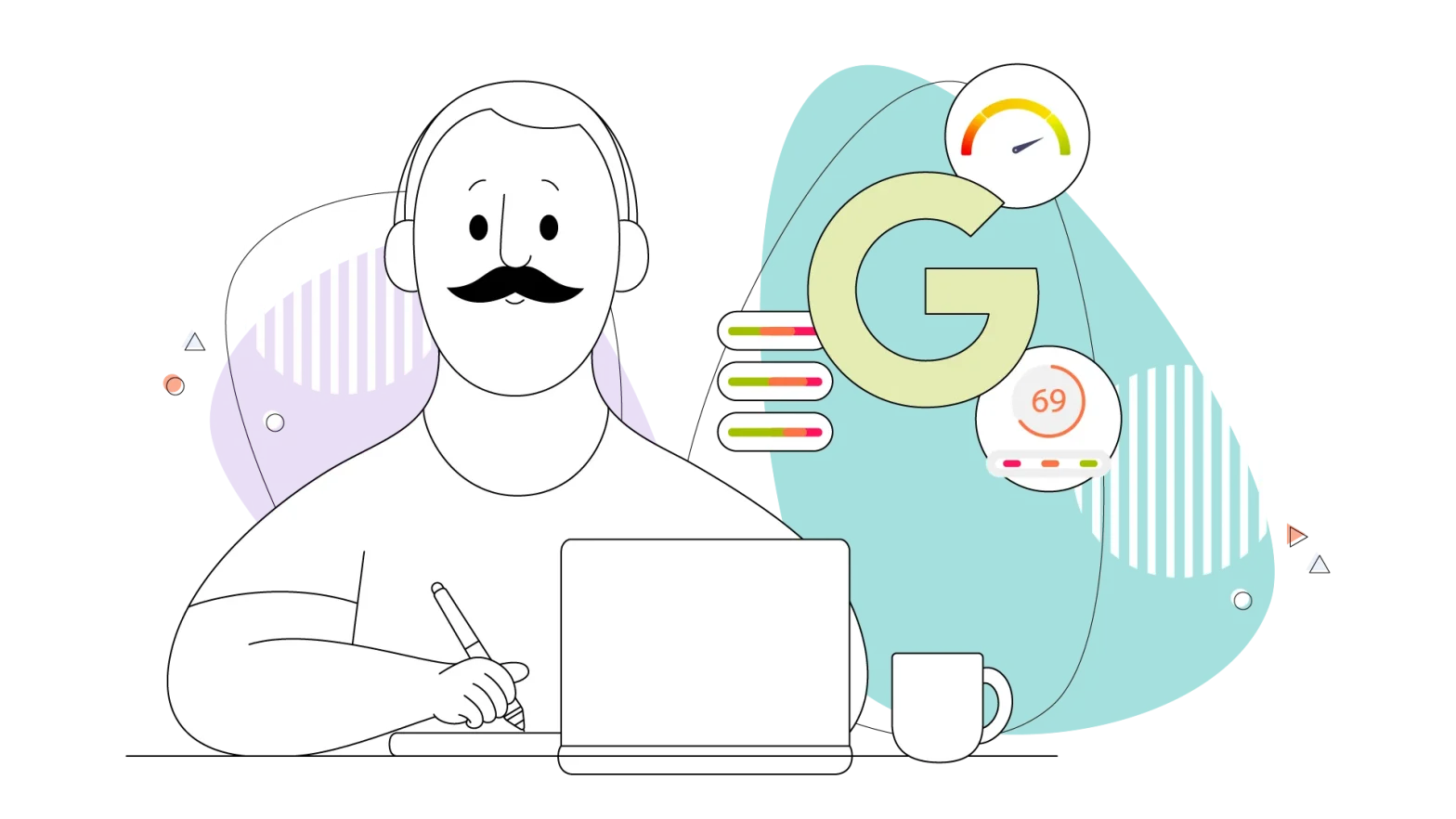Most of your competitors have websites that not only look great, but are also loaded with amazing features and outstanding functionality too. There are good reasons for the effort that they put into these websites, the main one being that it attracts visitors.
If your website isn’t quite as well built or thought out, then you might have noticed that the traffic has never really met your expectations, or perhaps you’ve noticed that the visitor count has been in decline for a while. In either case, you could have fallen into one of the many traps that web designers try so hard to avoid.
We’ve compiled 10 common design mistakes that could be hampering your website’s potential, so you can fix them. So, without any further delay, let’s dive in!
1. Your Website Takes Too Long to Load
If your site is taking too long to load, then you need to rethink some design elements. The faster your website loads, the better the experience is for your visitors. There are plenty of pointers out there about speeding up your website, so we’ll just touch on the essentials that will help you to get started.
First and foremost, you should consider optimizing the images on your website, especially your home page. Nothing scares off users faster than a landing page with pictures and graphics that take too long to load, so scale down your images and optimize your content wherever possible.
Hefty plugins, themes, and modules can slow down your website’s loading times as well. Updating these elements to newer versions can help to speed things up, especially if you haven’t updated them in quite a while.
Remember to test thoroughly before you go ahead and update your live website, just in case there are changes to the way that the plugins behave with your site. That way you can make sure that nothing has become broken after the updates, and you can implement the changes after testing everything.
2. Your Website Isn’t Mobile Friendly
If you don’t have a mobile friendly website that is responsive and scales well to a smaller screen, then you are missing out on a lot of traffic. This is because mobile device users will not stick around to try and use your page if they can’t view it or read its content properly.
Statista shows that worldwide, the number of mobile users in the 3rd quarter of 2018 came in at around 52.4% of all internet browsing traffic.
That means that more than half of your visitors are expecting you to deliver a quality experience to their mobile devices, so you should really make sure that you are able to meet their expectations if you plan on keeping this massive share of users engaged with your content.
3. Poor Design and/or Layout
Your website needs to be functional for your users, especially if you have a specific task that you would like them to complete, such as signing up to a newsletter or buying an item from your store.
If you haven’t thought about this, then the chances are that the pathway around your website has not been mapped out and built correctly for your users. This often results in users getting stuck in a loop where they can’t make sense of your content, which means that they won’t be coming back.
If you are experiencing a user decline or bad user retention, then you should look at how your design and layout elements are currently formulated. If your menu layouts don’t make any sense, then you run the risk of confusing and frustrating your visitors.
Remember that people have more choices than ever before, so if your website is not offering them all of the elements that they need, then they will almost certainly look at another option.
4. You Are Missing a Call to Action
This point follows on from the last one, and takes it one step further. If you are finding that you are getting lots of traffic, but you are not achieving your objectives, such as buying a product or signing up for a free trial, then you may not be steering your users properly.
The best, and most effective way of achieving this is by implementing and making explicit your Call to Action. This is the primary reason for your users to visit in the first place.
Make sure that you are being absolutely clear about what you want them to do, and that they are able to carry out the tasks that you have in mind for them.
In marketing this process is sometimes also known as conversion marketing, as it turns a visitor into a customer or follower. You can also look at applying some conversion rate optimizations to improve your client and user onboarding processes.
Whatever action a new user is supposed to complete will be determined by your overall plan. Do you want them to sign up and start purchasing products, or do you want them to become regular readers that engage with your content and communicate with you? Whatever you decide, make sure that your design follows through and enables you to do it.
5. You Have No SEO or Analytics
In order to treat a problem, you need a diagnosis. SEO and marketing data analytics are the best diagnostic tools for your website’s popularity, and will tell you about how well it is doing in terms of ranking and positioning.
SEO will make sure that your website appears much higher up on the search results pages, because the second or third pages of a search engine results list are much, much less likely to be seen.
Analytics can also show you what the average visit duration is on your website, and will tell you what users have been doing on the page. This is a good way to see how the latest elements that you add to your website are acting, and if the visitors are using them as intended.
You can also find out what they are doing before they leave your page. If you find that there are many of the same actions being completed just before a user logs off or closes the browser tab, then you can potentially find the issue that is causing a problem and then fix it.
6. Your Website Lacks the Right Information
Visitors are interested in finding out details about businesses and interests, and if you do not have them listed on your webpage, then you are losing out on valuable traffic.
For example, if you are a business, then you need to include business hours for your customers, as well as important information, such as your store locations and contact details.
If you are trying to attract visitors to your physical location, then you should definitely look at integrating Google Maps into your location section, as well as having the correct address details at hand so that your business can be found easily.
If your details are not present, or not correct, then you are never going to get any good business from your website. You must make sure that any contact information you have listed is valid. If you have specified an email address on your website, ensure that it is an attended mailbox that you have access to.
If your visitors are sending emails to an address that never get read, then you are wasting both your time and your visitors’ time as well, so remember to keep on top of your correspondence with your users, and answer as often and as quickly as possible.
7. Issues with Font Size, Style and Color
If your users can’t read your blog’s text, or your main navigation menus, then you have a big problem. You need to use the best colors and fonts for maximum readability so that your users can get the most information out of your site with the least effort.
If a mobile user cannot read the font, or if the font does not auto adjust to the right size and formatting, then you are going to lose them before they complete your Call to Action.
Be kind to your readers if you have a lot of text on your site, use colors that are forgiving on the eyes. The last thing you want to do is give your users eye strain, so make sure that your text and background colors aren’t too harsh, and that the site encourages your users to read your content comfortably.
Text is also really important for mobile users, who rely on the website’s responsiveness to automatically format paragraphs to fit the irregular shape of the mobile devices’ viewing dimensions.
If you do not have a responsive website, then mobile users will have a terrible time trying to scroll across the screen, line by line. Most people would rather find another reading source than have to put up with that kind of trouble, which means that you will potentially lose out on a customer. Don’t ignore page responsiveness for your text elements.
8. Keep Your Content Fresh and Updated
If you have ever visited a website with outdated articles, or a neglected news section, then you know how an outdated website looks to users. Not many people are happy with interacting with a site that can’t tell them things that they want to know, so they are more likely to go elsewhere for content and news.
This happens to blogs as well. Sometimes a blog starts off with regular updates that slowly thin out over time, then stop altogether. If your blog is not updated, then the chances of your readers starting with your old posts is far less likely.
People want fresh and updated content that follows through with its delivery schedule, so make sure that you keep on top of this with your website so that you can attract new users, and then keep them coming back regularly with new content.
9. Social Media links that are too Prominent
If your social media links are right at the top of your page, then you could be sending people away before they even get a chance to look at all of your website’s content.
Social media links will steer traffic away from your website and straight to the social media platform’s page. Rather feature it at the bottom of your page so that users read your content before they decide to leave the page, or have discrete shortcuts located on your contact page.
That way, you have a better chance of having your visitors fill out a contact form, or subscribe to your newsletter.
10. Your Site Is Not Secure
If a website does not have a valid HTTPS certificate, then it is not secure. You need HTTPS certificates in order to be considered safe by modern browsers. If these are not in place, then users will receive messages directly in their browsers advising them that your website is not safe.
HTTPS encrypts data between your website and your user so that valuable information is not intercepted by cyber criminals, making it encrypted and private.
If you aren’t sure about the state of your website’s security, then ask your current hosting provider if they can make any recommendations for you. Most hosting providers will keep their platform up to date, but it doesn’t hurt to check. You could also make sure that your plugins, themes and other website elements are all up to date and patched with the latest updates for added security.
Many website owners have not managed to conquer these basics, which means that they are potentially losing out on new customers and fans, which could seriously affect their business. If any of these issues sound familiar, then be sure to make some changes as soon as you can, you’ll be happy you did.
Did you find any of these mistakes on your website?








